#pathophysiology notes
Text
Acetylcholine

Patreon
#studyblr#notes#my notes#medblr#medical notes#pathology#pathology notes#pathophysiology#pathophysiology notes#health and disease#diseases#disorders#human health#human disease#human pathology#human disorders#diseases and disorders#clinical pathology#clinical health#clinical disease#premed#mcat#mcat biology#medical biology#bio#biology#mcat bio#human pathophysiology#note cards#flash cards
8 notes
·
View notes
Text

Got more time to sleep over the past few weeks and didn’t exhaust myself with any wayward thoughts. Saving my energy for more important battles. ☺️
I began visiting garden as part of my mental-health regimen. Reading/studying near garden, helps me deal with stress. (i didn’t have photos tho 😅)
🤍🌳🍃🌿🎋
Started reading about Renal system. 🥲 Yaahs, it’s my least fav ‘cause it’s the most complex system for me. 🥲😂
#studyspo#studyblr#nurblr#art#nursblr#studyspiration#bookblr#premed#books#study aesthetic#myhoneststudyblr#tbhstudying#study notes#study motivation#physiology#anatomy#pathophysiology#physioblr#aesthetic#somuchtostudysolittletime#gospel artist#dark academia#garden#greenbelt
23 notes
·
View notes
Text
pov you have metabolic acidosis/alkalosis


#pathophysiology#yes i know it's not always the kidneys' fault i'm tired i'm just meme-ing#notes#i'm brainrotted#devil may cry
26 notes
·
View notes
Text
must have books | dear nursing student
After being accepted into nursing school, I had no idea what to do next. I started looking up all kinds of stuff trying to figure out what to expect; YouTube, ALLNURSES, Instagram etc. I took bits and pieces of advice from all of them. I'm going to start by sharing the books I have found useful. This is mostly dedicated to those that procrastinate or can't stay focused long enough, like me. These are easy reads that are broken down into small sections which makes them engaging.
Pre-Nursing School
○ Saunders NCLEX-RN
This book should be purchased before you even get a stethoscope. Things to study before starting first semester —
○ Fluids and Electrolytes
○ Acid-Base Balance
○ Vital Signs
○ EVERYTHING ABOUT DIABETES MELLITUS
Practicing the clinical application questions will be good review to get yourself use to the types of questions you'll see on your first quiz and test.
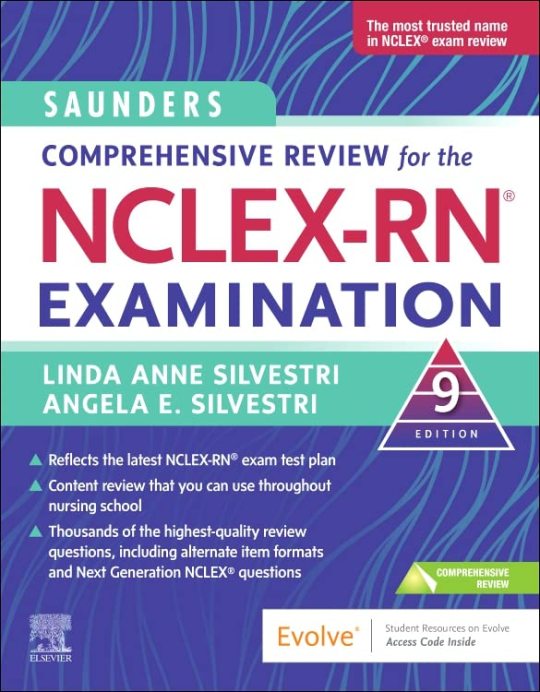
Pre- or During Nursing School
○ Pearsons Pathophysiology Reviews and Rationales
○ Elsevier Nursing Diagnosis Handbook | An Evidence-Based Guide to Planning Care
— these two books saved me during first semester —
○ Learn how to use the NDH, it's a lifesaver | Elsevier
○ Get familiar with pathophysiology, nursing assessments, client-centered nursing care, nursing interventions | Pearsons R&R
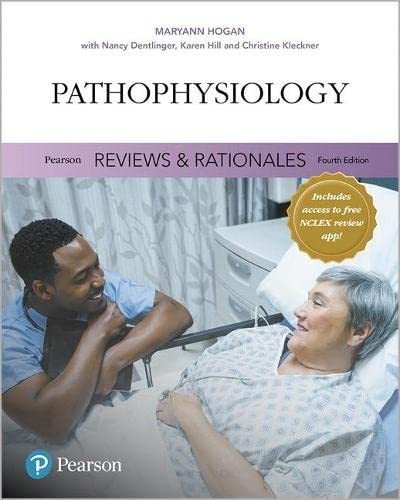
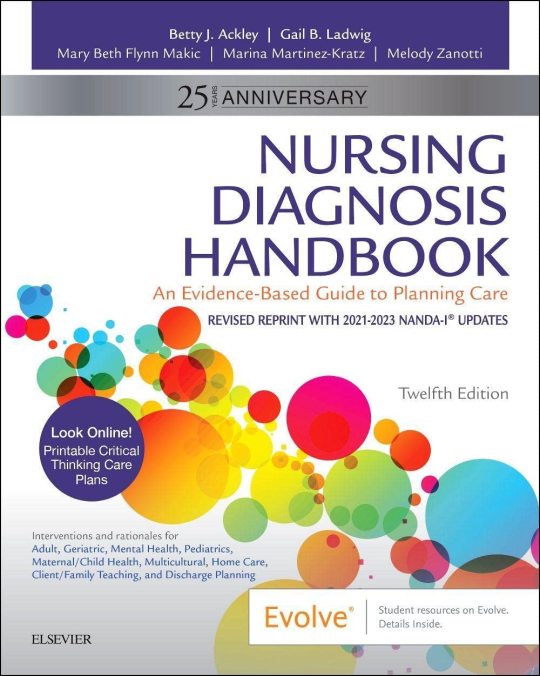
Moving onto Pharmacology
○ Pearsons Pharmacology Reviews and Rationales
○ Pearsons Nurse's Drug Guide
I plan to continue to use Pearson Reviews and Rationales books through the rest of my nursing program. These books are far from the dense nursing school textbooks but contain the same information. Alongside the Saunders NCLEX-RN, you should be set for your nursing school journey.
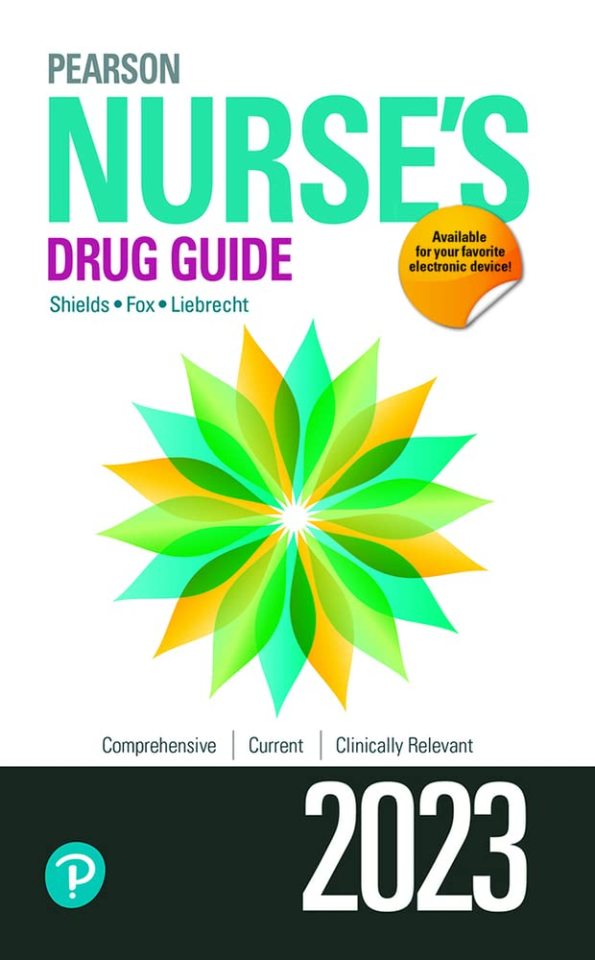
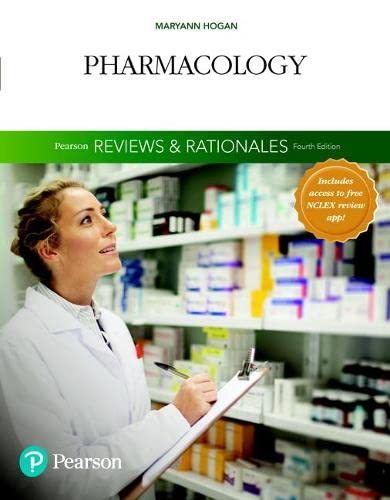
NOTE — Please stop buying other peoples notes, TAKE YOUR OWN NOTES! These books have more information than any individualized notes seller out there. Taking your own notes allows you to personalized your perspective on the topics you learn.
#nursing#nurseblr#nursing student#studyblr#nursing school#enfermeria#enfermera#estudiando#estudios#drug guide#pearson#libros#estudiando enfermeria#pharmacology#pathophysiology#nursing diagnosis#nclexreview#nclex rn#saunders#nclex
98 notes
·
View notes
Text
Understanding Borderline Personality Disorder and the Role of Lamotrigine in Treatment
Borderline Personality Disorder (BPD) is a complex mental health condition characterized by emotional dysregulation, unstable relationships, impulsivity, and an unstable sense of self. Research into the underlying causes of BPD suggests a combination of genetic predisposition, neurobiological factors, and environmental influences. BPD is challenging to diagnose and treat due to its intricate nature, but one potential avenue of treatment that has garnered attention is the use of the medication lamotrigine.
Lamotrigine is an anticonvulsant medication primarily used to treat epilepsy, but it has also shown promise in addressing mood disorders, including BPD. This medication works by modulating the activity of glutamate, an excitatory neurotransmitter in the brain. Glutamate has been implicated in the pathophysiology of BPD, particularly in relation to emotional dysregulation and impulsive behaviors. Lamotrigine's mechanism of action involves stabilizing glutamate transmission, potentially leading to improved emotional stability and reduced impulsivity in individuals with BPD.
Research on the efficacy of lamotrigine in treating BPD is ongoing, but several studies have provided insights into its potential benefits. A randomized controlled trial by Elmslie et al. (2010) found that lamotrigine reduced emotional dysregulation and impulsivity in individuals with BPD. Furthermore, Nock et al. (2012) conducted a study indicating that lamotrigine might help alleviate self-injurious behaviors frequently associated with BPD. However, it's essential to note that the response to lamotrigine can vary among individuals, and its use should be carefully considered in conjunction with other therapeutic approaches.
While lamotrigine holds promise as a potential treatment for BPD, it's crucial to approach its use with caution. Consulting a mental health professional is vital to determine the appropriate course of treatment for individuals with BPD. The complexity of the disorder and the variability in treatment responses highlight the need for personalized and comprehensive approaches that may involve psychotherapy, medication, and support networks.
Sources:
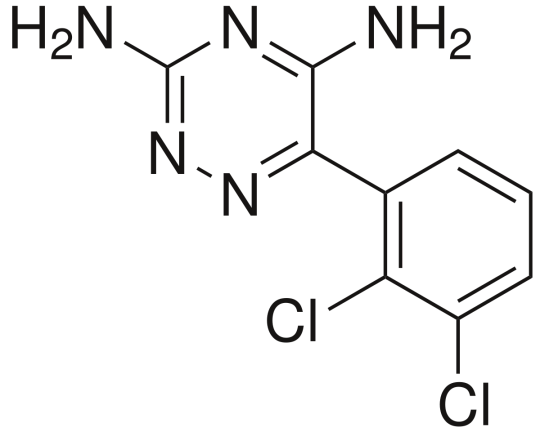
Elmslie, J. L., Porter, R. J., Joyce, P. R., & Wells, J. E. (2010). Lamotrigine in Borderline Personality Disorder: A Randomized, Double-Blind, Placebo-Controlled Study. *The Journal of Clinical Psychiatry, 71*(6), 716-721.
Nock, M. K., Mendes, W. B., & Bogdan, R. (2012). A Preliminary Investigation of the Relationship Between Self-Injurious Behavior and Suicidal Behavior in Adolescents. *The Journal of Nervous and Mental Disease, 200*(10), 828-833.
Note: This information is for educational purposes only and should not be considered a substitute for professional medical advice. Always consult a qualified healthcare provider for personalized guidance and treatment options.

#bpd#bpd problems#bpd stuff#bpd mood#psychology#psychiatric#science#college#education#medicine#doctors#health#memtal health#mental illness
10 notes
·
View notes
Text
My sister is making fun of me bc I have my pathophysiology textbook open on my bed and a bunch of note books taking up the other side of my bed while Im laying down for a nap
"Is that your boyfriend" Fuck you, you wouldnt even understand the bond between a guy and his favourite large book
6 notes
·
View notes
Text


11.03.22
day 58/100
D6 before case presentarion 🥶 — today I was able to observe how case presentations with our pulmonary pathology professor goes – you have to be knowledgeable of almost every detail of the case assigned to your group especially since we're the ones to make up the scenario and patient.
I had lots of queries for my intern friends for nursing and RT and I'm fortunate to have a very approachable professor.
today's progress report:
attended pulmo patho class
had a quiz for pulmo rehab
attended PE class
my groupmates and I decided on our patient, his situation and our parts – I got the bloody part of assessment aside from pathophysiology and plan of action
I was able to fill out the patient's physical examination, arterial blood gas analysis, EKG, radiography and right heart catheterization findings
Pathophysiology ✔️
2/3 through TPF trans
can I also note down here how much I love using coffeemaker ? Saves me time throughout the day I just have to refill and refill my mug whenever I need my coffee fix + also just need to refill the ice trays at the end of the day hahaha
instagram
#r-ene#r ene#respiratory therapy major#respiratory therapy#respiratory student#respiratory therapy student#respiratory#studyblr#study#studies#studying#students#student#student life#studentlife#studyblr community#study blog#study challenge#uniblr#collegeblr#college student#uni#university student#uni life#university life#university#100 days of productivity challenge#100 days of productivity#100 dop#100dop
20 notes
·
View notes
Text
Blog Week 1
19 April 2023
From theory into practice: Your first week of fieldwork. How does treating make you feel.
The first week of on-site fieldwork at the Entabeni Rehabilitation Centre – rushed assessments, overbooked patients, and a student willing to take it all on. Through constant engagement with my supervisor I was able to navigate a structured outline for the week ahead, prioritise assessments and even began confidently planning various intervention strategies which lie ahead.
My first week at Entabeni went by rather quickly, my first day was spent in angst amongst awaiting my assigned patient’s, being orientated to the facility, and structuring an effective and efficient plan to enable the completion of all my goals for the day. Due to the morning MDT meeting, I was only able to orientate myself with my assigned patients at a late stage in the morning. Due to various factors, my list of patient’s appeared interchanging. By 12 o’clock, I was able to begin my assessment process in which I spent my time gathering collateral information pertaining to my patient. I was able to spend the rest of the afternoon reading through the files and researching the patient’s diagnosis: Cauda Equina Syndrome, which enabled me to further understand my patient and her symptomology.
https://www.webmd.com/back-pain/guide/cauda-equina-syndrome-overview & https://www.msdmanuals.com/professional/neurologic-disorders/spinal-cord-disorders/cauda-equina-syndrome#v45679379
On Day 2 of fieldwork, I was able to complete all my prioritised assessments (Sensation Assessment, Muscle Strength Assessment, Joint Range of Motion Assessment, Reflex Assessment, Pain Assessment and Posture Analysis) on my patient. I was filled with many questions and queries for my supervisor. An assessment I had found rather complex in this case, was the Muscle Strength Assessment. I was perplexed and unsure if I was grading my patient’s performance in this test accurately. My supervisor was able to assist me in further understanding how the Oxford Scale functions and how to cross-check that my assessment findings are accurate, bearing in mind other assessment findings from a Joint Range of Motion Assessment. Although I had previously researched this assessment and techniques on administration, I still required assistance. I had also spent time researching the impact of this condition and the client factors most affected. I had watched numerous videos on how to conduct the above assessments to ensure I was accurately performing the assessments. https://passtheot.com/manual-muscle-test-mmt-grading-scale-free-trial/#:~:text=Manual%20muscle%20strength%20testing%20is,well%20as%20specific%20muscle%20groups & https://www.youtube.com/watch?v=kFkRa17hlVc
From this experience, I was able to deduce that my implementation of theoretical understanding underpinning this assessment was poor, therefore I am drawn to revising and practicing my assessments. This will ensure effectiveness and efficiency in further conduction of assessments with my patient. Being able to understand the clinical presentation of my patient has further guided my intervention strategies and enabled me to understand the importance the client-centred approach. Due to limited time, I was unable to begin the implementation of my treatment strategies and am hopeful to begin in the second week (it is important to note that this is due to an unexpected health complication on my end and not due to poor time management).
Being introduced to this new setting and being afforded the opportunity of interacting with the various MDT members has allowed me to understand the importance of teamwork and confidence. I have noted that I am yet to improve on my confidence in my skills as a therapist, however, am to maintain a ‘can do’ attitude. Through feedback I can improve on many areas as a student and am left in awe of the profession of Occupational Therapy.
youtube
References
Cauda Equina Syndrome - Neurologic Disorders. (n.d.). MSD Manual Professional Edition. Retrieved April 18, 2023, from https://www.msdmanuals.com/professional/neurologic-disorders/spinal-cord-disorders/cauda-equina-syndrome#v45679379
Manual Muscle Test (MMT) Grading Scale Free Trial. (n.d.). Pass the OT. Retrieved April 19, 2023, from https://passtheot.com/manual-muscle-test-mmt-grading-scale-free-trial/#:~:text=Manual%20muscle%20strength%20testing%20is
Stuart, A. (2010, March 30). Cauda Equina Syndrome Overview. WebMD; WebMD. https://www.webmd.com/back-pain/guide/cauda-equina-syndrome-overview
Tumors of the Conus and Cauda Equina: Overview, Anatomy, Epidemiology. (2019). EMedicine. https://emedicine.medscape.com/article/251302-overview#:~:text=Compression%20of%20the%20spinal%20cord
Wiseman, D. (2019). Cauda Equina Syndrome – Symptoms, Causes, Diagnosis and Treatments. Aans.org. https://www.aans.org/en/Patients/Neurosurgical-Conditions-and-Treatments/Cauda-Equina-Syndrome
2 notes
·
View notes
Photo


#studyblr#notes#medblr#medical notes#med notes#nervous system#nervous system disorders#disorders of the nervous system#diseases and disorders#nervous system notes#pathophysiology#pathophysiology notes#pathology#pathology notes#paraplegia#quadriplegia#parkinson's#tbi#multiple sclerosis#meningitis#epilepsy#dementia#cerebral palsy#alzheimer's#parkinson's disease#alzheimer's disease
49 notes
·
View notes
Text
poll
should i a) take notes on the pathophysiology of blood disorders
should i b) write poetry
should i c) paint the horror thing
should i d) take pictures of my rocks and send them to my bf
or should i e) continue to sit in my beanbag chair and do nothing
6 notes
·
View notes
Text
recent notes art dump ✨


forgot urizen but not gilver ashdkdksksks
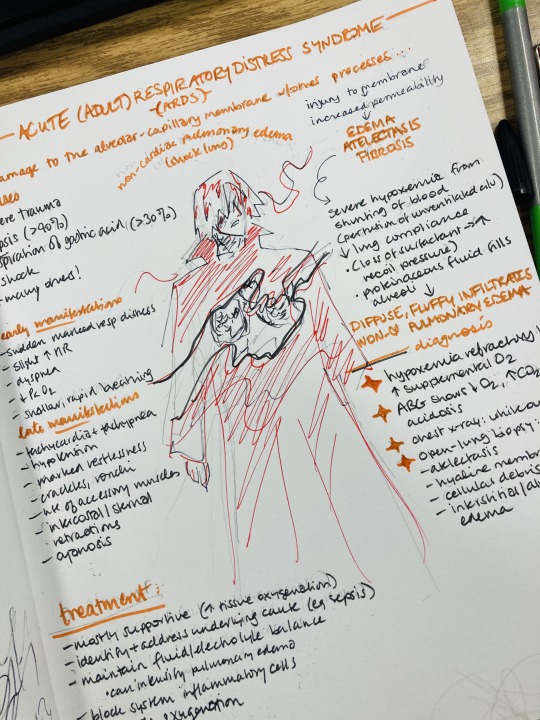
getting totaled by the coyote will do that to you

lucia but prof part time at vie de marli community college
#been slower on tumblr bc I’ve been distracted on discord and now I’m getting to posting the backlog#my art#sketches#notes#pathophysiology#rlly no connection anymore between characters and topics I just draw whatever I want lol#devil may cry
18 notes
·
View notes
Text
All About: Schizophrenia
[Note: If you have schizophrenia/are schizophrenic (not sure if the community prefers person-first or identity-first language, so I’m giving y’all both), please feel free to chime in with corrections or additions in the comments. I don’t know what I don’t know, but I’m always willing to learn.]
Pathology = Study of Disease
Pathology addresses the following components of disease:
cause/etiology
mechanisms of development (pathogenesis)
structural alterations of cells, tissues, and organs
functional alterations of cells, tissues, and organs (pathophysiology)
the consequences of those changes (clinical symptoms)
Characteristics
The most typical feature of schizophrenia is psychosis:
severe distortions of reality and perception
disturbances in intellectual function, affect, motivation, social relationships, and motor behavior
relapsing episodes
- This can be so incapacitating that voluntary or involuntary hospitalization is required.
Classification of Mental Disorders in the DSM-5
Psychiatric disorders are listed in the DSM = Diagnostic and Statistical Manual of Mental Disorders.
- published by the American Psychiatric Association (APA)
- currently on 5th edition (2013)
1.2 Section II: diagnostic criteria and codes
- 1.2.1 Neurodevelopmental disorders
- 1.2.2 Schizophrenia spectrum and other psychotic disorders
- 1.2.3 Bipolar and related disorders
- 1.2.4 Depressive disorders
- 1.2.5 Anxiety disorders
- 1.2.6 Obsessive-compulsive and related disorders
- 1.2.7 Trauma- and stressor-related disorders
- 1.2.8 Dissociative disorders
- 1.2.9 Somatic symptom and related disorders
- 1.2.10 Feeding & eating disorders
- 1.2.11 Sleep-wake disorders
- 1.2.12 Sexual dysfunctions
- 1.2.13 Gender dysphoria
- 1.2.14 Disruptive, impulse-control, and conduct disorders
- 1.2.15 Substance-related and addictive disorders
- 1.2.16 Neurocognitive disorders
- 1.2.17 Paraphilic disorders
- 1.2.18 Personality disorders
Diagnosis
Criterion A: Characteristic Symptoms
- Two or more of the following, each present for a significant portion of time during a 1-month period (or less if successfully treated). At least one of these should include symptoms 1-3 (positive symptoms).
Delusions
Hallucinations
Disorganized speech
Disorganized or catatonic behavior
Negative symptoms (e.g. blunted emotions)
Cognitive deficits
Criterion B: Social/Occupational Dysfunction
Criterion C: Duration of Six Months or More
Criterion D: Schizoaffective and Mood Disorder Exclusion
Criterion E: Substance/General Mood Condition Exclusion
Criterion F: Relationship to Global Development Delay or Autism Spectrum Disorder
[Note: If you’ve been misdiagnosed with schizophrenia when you were actually dealing with schizoaffective disorder, autism, substance use, a mood disorder, etc., please feel free to share your experience in the comments.]
Delusion: a belief that is held with strong conviction, despite superior evidence to the contrary.
- Karl Jaspers (1913) established three main criteria for a belief to be considered delusional:
certainty (held with absolute conviction)
incorrigibility (not changeable by compelling counter-argument or proof to the contrary)
impossibility or falsity of content (implausible, bizarre, or patently untrue)
- Examples:
Delusion of persecution involving the individual’s belief that others are spying on or planning to harm them
Delusions that thoughts are imposed from an outside source, such as outer space
Hallucinations: pathological forms of perception.
- Auditory hallucinations are frequent and are usually voices that are insulting or commanding.
- Visual hallucinations are rarer (in catatonic schizophrenia). More typical with epilepsy or hallucinogen use.
- Gustatory, olfactory, and somatic sensations also occur [note: I don’t have stats on the frequency of these; please share them if you got ‘em.]
Disorganized Speech
- sometimes called “word salad”
- frequent change of conversation topics with no connection between sentences
- speech can follow grammatical rules, but content makes little sense

Disorganized or Catatonic Behavior
- Motor activity is reduced and characterized by inappropriate and bizarre postures, rigidity, or “purposeless” and stereotyped movements (e.g. rocking or pacing).
- At times, people with schizophrenia (particularly the paranoid type) can become agitated and/or violent.
Catatonia: motor immobility and behavioral abnormality manifested by stupor.
- Stupor = lack of critical cognitive function and a level of consciousness wherein the person is almost entirely unresponsive and only responds to base stimuli such as pain.
Negative Symptoms
Blunted emotions = emotions may be absent or totally inappropriate to the situation. Sudden and unpredictable changes of emotion are also common.
Inability to experience pleasure
Social withdrawal
Lack of eye contact
Lack of motivation
Poverty of speech
Cognitive Deficits
Schizophrenia is classified as a thought disorder, characterized by illogical thinking, lack of reasoning, and inability to recognize reality.
Cognitive symptoms include impaired working memory, executive functioning, and attention. Many cognitive deficits impair the ability to function at school, at work, etc.
Onset of Schizophrenia
- Symptoms most often begin during the late teenage years and early twenties, but there are gender differences. After age 36, more women than men experience their first episode.

Etiology of Schizophrenia
- Although schizophrenia was described as early as 1000 BC, its causes remain unknown.
- It is increasingly regarded as a neurodevelopmental disorder with a strong genetic component.
Importance of genetics is shown by many family, twin, and adoption studies.
Other factors must be involved as well; we’re still figuring those out.

Lifetime risks of developing schizophrenia among relatives of an affected individual
Events during perinatal brain development can contribute to the occurrence of schizophrenia.
- These complications include:
brain injury during pregnancy or delivery caused by oxygen deprivation
drug use
exposure to viral infection (ex. measles) in the 2nd trimester
endocrine disorders
severe malnutrition
- During adolescence, a period of significant brain development, excessive synaptic pruning can result in loss of cortical gray matter.
- Cannabis use during adolescence might increase the risk.

Neurobiology of Schizophrenia: Structural Changes
- Recent advances in technology have revealed abnormalities of brain structure and function in individuals with schizophrenia.
- Many studies show cerebral atrophy and enlargement of fluid-filled ventricles following cell loss.

Brain Imaging & Mental Disorders
- Brain imaging techniques are currently not used to diagnose mental disorders.
- Imaging is currently used for research purposes and is helping to identify the brain regions involved in different pathologies.
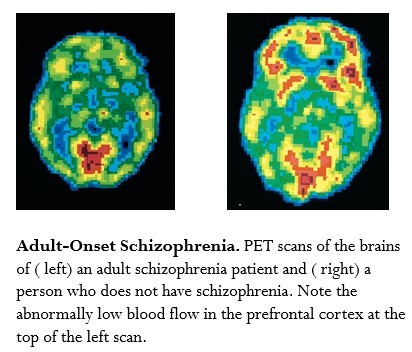
- Numerous studies show that hippocampal cells of patients with schizophrenia are more disorganized than those of healthy subjects.
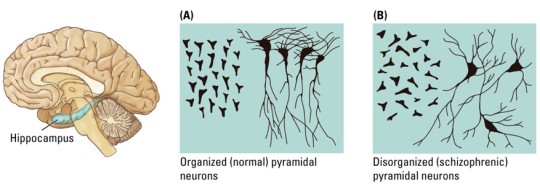
Neurobiology of Schizophrenia: Functional Changes
- Brain functional changes include reduced function of the prefrontal cortex (PFC), called hypofrontality.
- Reduced blood flow is associated with less glucose use, which indicates how active the brain cells are.
- Imaging studies show less blood flow to the frontal cortex when people with schizophrenia are performing cognitive tasks, such as the Wisconsin Card Sorting Test (WCST).


Neurobiology of Auditory Hallucinations
- Reduced gray matter volume in the temporal lobe
- Impaired processing in a prefrontal and temporal lobe neuronal network, due to hyper-activation of temporal lobe regions, including the auditory cortex, which is not inhibited due to impairment of prefrontal executive inhibitory functions.

Neurobiology of Schizophrenia: Functional Changes
- Eye-movement dysfunctions such as inability to visually track an object.
- Failure to track is also common in relatives of schizophrenic patients. The defective eye-tracking gene may be inherited along with the genes for schizophrenia.
The dopamine hypothesis = excess DA function results in positive symptoms of schizophrenia.
- It was suggested by the fact that amphetamine (which increases dopamine) can produce a psychotic reaction in healthy individuals, which can be reversed by DA antagonists.
- There is a strong correlation between D2 receptor blockade and reduction of schizophrenic symptoms.
DA imbalance hypothesis:
reduced DA function in mesocortical neurons (negative symptoms and impaired thinking) = D1 receptors
excess DA function in mesolimbic neurons (positive symptoms) = D2 receptors

Hypoglutamate hypothesis:
- Blocking NMDA receptors with PCP or ketamine produces schizophrenia-like symptoms in healthy individuals and exacerbates symptoms in schizophrenic patients.
- PCP and ketamine produce both the positive and negative symptoms.
- Antipsychotic drug clozapine interacts with the glutamate receptor and increases glutamate levels in the PFC of rats.

Schizophrenia: Treatments
- Before drug therapy, patients were confined to mental hospitals where treatment was limited to isolation or restraint, “shock” therapy using insulin-induced seizures or electrical currents, and surgery such as prefrontal lobotomy.

Lobotomy: consists of cutting the connections to and from the prefrontal cortex.
- controversial procedure accompanied by frequent and serious side effects
- was used to treat psychiatric (and occasionally other) conditions from 1935 till mid-1950s [note: gay men and lesbians were subjected to lobotomies in an attempt to “cure” them during this time period.]
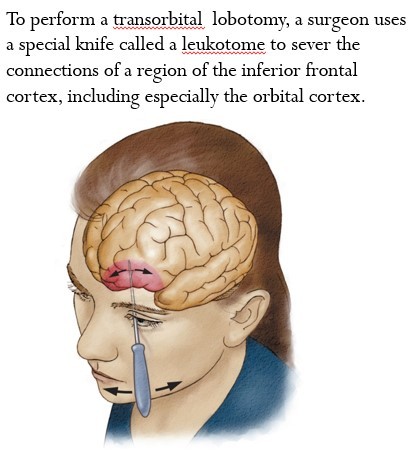
- The dramatic decrease in the number of resident patients in state and municipal mental hospitals in the United States began after 1955, when psychoactive drugs were introduced into widespread therapeutic use.

Anti-psychotic Drugs
Neuroleptics = older term for anti-psychotic drugs
- Typical anti-psychotics: have motor side effects (ex. Chlorpromazine, Haloperidol)
- Atypical anti-psychotics (2nd generation): fewer side effects (ex. Clozapine, Risperidone)
- Effectiveness of these drugs has been demonstrated hundreds of times, especially for positive symptoms.
- Negative and cognitive symptoms are more resistant to treatment.
- The law of thirds = 1/3 of patients respond well to treatment, 1/3 shows significant improvements but is vulnerable to relapse, and 1/3 fails to respond.

After initial recovery, anti-psychotic drugs are prescribed as maintenance therapy to prevent relapse.
- Unpleasant side effects cause many patients to stop treatment.
- Psychotherapy and group therapy are important additions to drug therapy.
Anti-psychotic drugs block D2 receptors.
- A strong correlation exists between ability of a drug to displace a radio-labeled ligand on DA receptors and average clinical daily dose required.
- D2 receptors are located in the basal ganglia, nucleus accumbens, amygdala, hippocampus, and less in the cerebral cortex.
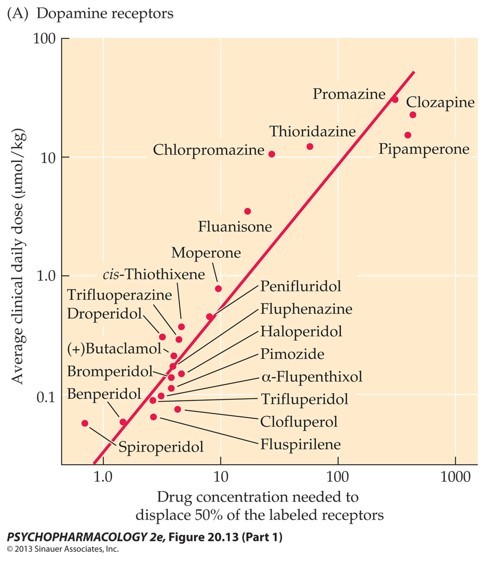
PET images show replacement of radio-labels on striatal D2 receptors by different anti-psychotic drugs.

The drugs also bind to other receptors, but there is no clear relationship between clinical effectiveness and binding to serotonin, adrenergic, histamine, or D1 receptors.

Anti-psychotics: Side Effects
Side effects depend on which receptor the drug binds to.
- Dopamine pathways in the brain are important for understanding drug action:
Nigrostriatal pathway (Substantia nigra ---> Striatum): Motor side effects
Hypothalamus ---> Pituitary gland pathway (regulates pituitary hormone secretion): Hormonal side effects

Parkinsonism: motor side effects that resemble symptoms of Parkinson’s disease:
tremors
akinesia (slowing or loss of voluntary movement)
muscle rigidity
restlessness (inability to sit still)
loss of facial expressions
- Parkinson’s is caused by loss of cell bodies in the substantia nigra, which gives rise to the nigrostriatal pathway.
- Lack of DA function in the striatum causes the motor effects.
Tardive dyskinesia (TD) is characterized by stereotyped involuntary movements, particularly of the face and jaw, quick and uncontrolled movements of the arms and legs, and other motor effects.
- Incidence of TD increases with duration of treatment.

Woman with tardive dyskinesia (TD)
- Neuroendocrine effects:
decreased sex drive
no menstruation
increased prolactin release
inhibition of growth hormone release
- Metabolic effects (typically significant weight gain)
- Inability to regulate body temperature
Neuroleptic malignant syndrome (NMS) is serious and life-threatening.
- characterized by fever, rigidity, altered consciousness, and autonomic nervous system inability (including rapid heart rate and fluctuations in blood pressure)
- Rapid diagnosis and immediate action have significantly reduced mortality risk.
Other side effects of anti-psychotics:
Blocking cholinergic synapses produces dry mouth, blurred vision, difficulty in urination, GI problems
Anti-adrenergic action leads to dizziness or blacking out
Many drugs also cause sedation
Anti-psychotics: Dependence
Anti-psychotic drugs causes little or no tolerance, physical dependence, or abuse potential, and have high therapeutic index.
- Lack of abstinence syndrome may be due to long half-life:
Haloperidol (20 hours)
Olanzapine (30 hours)
Aripiprazole (75 hours)
Atypical Anti-psychotics
“Atypical” or “second-generation” drugs reduce positive symptoms of schizophrenia as well as classical drugs, but without significant motor side effects.
- Some new drugs do not produce TD or increase prolactin secretion.
- Three types:
Selective D2 receptor antagonists
Dopamine system stabilizers
Broad-spectrum anti-psychotics

Dopamine system stabilizers:
Partial DA agonists compete with DA for receptors and reduce DA effect (ex. aripiprazole, trade name: Abilify)
Has few side effects
Little evidence of cardio-toxicity, weight gain, or motor side effects
Adverse effects such as headache, agitation, insomnia, and nervousness are minor.
Broad-spectrum anti-psychotics block other receptor types in addition of D2 receptors (ex. Clozapine, risperidone)
- Clozapine has weak affinities for D1 and D2 and strong affinities for serotonergic, muscarinic, histaminergic, and D4 receptors.
- It is more effective for patients who do not respond to total anti-psychotics.
- Clozapine has fewer motor side effects. However, it does have many other side effects because of its action on multiple receptors, including:
weight gain
sedation
agranulocytosis (a rare blood disorder that severely reduces number of white blood cells)
cardiac toxicity
- Clinical trials in the UK found that clozapine was superior to the other anti-psychotics in the treatment of negative symptoms.
- Clozapine can improve cognitive symptoms.
appears to be the only true “atypical” anti-psychotic, because no other 1st or 2nd generation anti-psychotics have this positive effect
The Search for a New Drug: Possible Approaches
(1) Enhance Acetylcholine: Clozapine is the only drug currently in use that enhances cognition. It does this by increasing acetylcholine release in the hippocampus.
(2) Selectively enhance D1 receptor signaling in PFC with D1 agonists.
Hypofrontality is associated with reduced DA function in PFC, especially at D1 receptors.
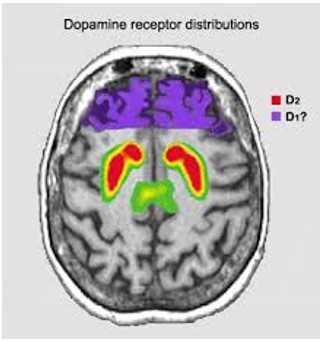
(3) Enhancing glutamate activity at NMDA receptors might reverse negative and cognitive symptoms.
Blocking NMDA receptors by ketamine can induce psychosis, cognitive deficit. So maybe stimulating NMDA receptors can have the opposite effect.

#drugs and behavior#Neuroscience#my notes#study blog#schizophrenia#cw: medical torture#cw: medical abuse#cw: homophobia
6 notes
·
View notes
Text
Sandeep Sahay, MD - phaware® interview 462
Dr. Sandeep Sahay, a pulmonologist at Houston Methodist Hospital, discusses the concept of disease modification in the treatment of pulmonary hypertension (PH). He explains how traditional PH therapies focus on vasodilation, reducing pressure in the pulmonary artery by dilating blood vessels. However, newer therapies, such as sotatercept, work in different ways to reduce smooth muscle proliferation and thickness of the artery walls. Dr. Sahay suggests that if a drug is labeled as disease-modifying, it may be used in combination with existing PH medications from the beginning of treatment. However, he notes that further research, regulatory approval, and payer considerations are necessary for this to happen. @MethodistHosp @SandeepSahayMD
Hi, I am Sandeep Sahay. I'm a pulmonologist. I'm at Houston Methodist Hospital, Houston, Texas. I've been involved with pulmonary hypertension patients and the PH Center at our place for the last 10 years. Clinically, I see patients with PH, or chronic thromboembolic pulmonary hypertension (CTEPH), or different types of pulmonary hypertension. I'm actively involved in research. We do a lot of clinical trials with the disease state. And also, our own academic stuff with grants and coming up with more thought-provoking ideas in this disease state, so that we can help our patients.
In the last three decades, we have made a lot of progress in this particular disease state. I would like to thanks to all my colleagues, and researchers, and my friends, mentors for the last two to three decades who invested their whole lives and careers into this disease state and made tremendous progress. But still there’s a lot more work to do. We are here to further the science and advance in this disease state.
On that note, the new thing, which is sort of I can say talk of the town is about disease modification. Many may wonder what this really means, and why we are even talking about it, and what's so new. I think this all started with us looking beyond our traditional PH therapies, which were generally considered as vasodilators. When I say that term in simple words, it means that we tend to reduce the pressure in the pulmonary artery by dilating the blood vessel. So most of our current therapies sort of classify into that category.
But now with newer therapies, specifically sotatercept, which I think many patients are excited about. I would say clinicians, researchers, physicians, we are all excited about this therapy. This is not in a way our traditional PH therapy. When I say that term, what I really mean is that it doesn't work the way our traditional drugs work. It doesn't dilate the pulmonary artery, which we historically understand with our currently approved therapies.
This drug kind of works in a different mechanism. When we look at that mechanism, the way it works, I'm going to be putting it in a very simplistic way that it just sort of tries to reduce that smooth muscle proliferation. Or, I should say that in PH, the thickness of the artery. It tries to reduce that by different mechanisms. I'm not going into detail scientifically that what it does, but it tries to restore the cellular level dysfunction in the endothelial cells, and then reduces the thickness of the vessel wall, so that it increases the size of your pulmonary artery. Now, since this drug works in a little different mechanism, we started thinking that, how do we describe how this drug works? When we started thinking about that, one of the things that naturally came to our mind was, should we call this drug as disease-modifying agent?
Now, what that really means is that by definition, which could modify the course of the disease. When we use this term as physicians and researchers, we generally tend to refer it in a positive connotation. It means we believe that the drugs which can affect the pathophysiology or the underlying process of the disease in a positive way, it means improving the disease. However, it's a generic English term disease-modification. Last week, I got surprised when one of the patients, actually, heard this term, she actually was thinking this can mean anything. Actually, she was right. Because disease-modification, could mean positive or could mean negative. But in the scientific world, in our research world, when we started using this term, we thought of it only in the positive way. We didn't really think in the negative way, because we were talking about the treatment agent.
This term actually comes from other disease states like rheumatological conditions. For example, rheumatoid arthritis, where you may have drugs to relieve the joint pain like your regular pain medications. But at the same time, there may be drugs which will work on the underlying mechanism, what causes rheumatoid arthritis and tries to prevent further damage to your joints. So, I'm just trying to make it a little different.
I'm going to take one example in the PH world also, when someone has pulmonary hypertension and is symptomatic, more short of breath. You start noticing that you develop fluid swelling, or leg fluid retention, or leg swelling, or fluid retention on your body. Then, you take a water pill. Those water pills can get your fluid off, can make you feel better, but they do not do anything to your pulmonary hypertension. But then your doctors will, after the water pill, they will say, "Okay. Well, you need to take PH medications also," which are whatever… you know all those names.
So then, you are started on those PH medications, in addition to the water pill. So try to understand the water pill doesn't really do anything. It doesn't change anything about your pulmonary artery pressure or the mechanism by which you develop that disease. But then your PH medications, on the other hand, I’ll take an example of those infusion pumps or those prostacyclin drugs. They definitely do help to relieve the pressure on your right side of the heart by dilating the pulmonary artery. So, that basically changes something about your pulmonary hypertension, which you do not see with the water pill. So, this is how the distinction is.
To further advance our understanding in these PH medications, we have this newer drug, sotatercept. In the future, you will see many more such drugs will come out. There is a lot of exciting work being done currently. So, all these different drugs, which are going to come out, they affect your disease process itself. That's why they're called disease-modification. Now, this term is generally used by the regulatory bodies, like FDA or maybe the European drug approving agencies. It's not something which we commonly use in our day-to-day practice when we are talking to patients.
The relevance of using this drug could be if, let's say, hypothetically speaking a drug gets a label from a regulatory authority that this drug is disease-modifying. Then, there may be a possibility that this drug may get inducted into the treatment algorithms along with your currently existing medication. There may be a possibility. And again, this will need a lot of research, regulatory body approval, and then with payers, etc. We're not going into all that. But in very simplistic way, what I'm trying to explain, if a drug becomes disease-modifying labeled along with the other properties, you could use that drug from the very beginning in addition to your other PH medications. There is a possibility. Maybe we will be using it this way. I don't know right now, because we don't have the drug available right now. We are waiting for FDA's call how and what all the recommendations when the drug gets approved.
This is why this whole new terminology is being discussed. To be honest, it's a good thing to do. It's a good scientific exercise. We all are learning through this process. So, I believe that yes, we should be discussing this, because that's how we advance new ideas come. That will be very helpful for everyone, for the scientific community, for our patients, and for everyone around us. So, I tried to explain this in a very simplistic way. I hope this is helpful for our patients and their care providers. But again right now, there is no gold standard way for us to define this term. It's a work in progress. So with that, I would like to end. If you have any questions, please reach out to us at www.phaware.global.
I am Dr. Sandeep Sahay, and I'm aware that my patients are rare.
Learn more about pulmonary hypertension trials at www.phaware.global/clinicaltrials. Follow us on social @phaware Engage for a cure: www.phaware.global/donate #phaware
Share your story: [email protected] #phawareMD
Listen and View more on the official phaware™ podcast site
0 notes
Text
BLOG
I had a good experience at the hospital without high turn over of clients and having the Chief OT assisting us with SOAP notes on our first day and our supervisor being there. I found 2 clients which one of them turned out to be not compliant and refused to participate in activity that was given. He was also talking back to me. I was then assigned to another client which relieved me because I felt better working with him than the first client. My strength is the ability to do admin and submit on time. I can receive feedback well and I will try to use it on Monday when I treat my clients.
Reflection of evaluation and intervention in fieldwork
According to research, stroke is caused by pathophysiologic processes involving loss of blood flow to the brain potentially causing transient or permanent neurologic dysfunction.
I had two clients for my fieldwork this week, CVA and Multiple Myeloma.
CVA Client: Client is a 31 year old male diagnosed with CVA left hemiplegia. My evaluation was primarily focused on muscle tone which is the first client factor that is affected with stroke clients, range of motion, balance(static and dynamic sitting and standing), hand function, endurance, ADLs and functional mobility. My findings were that client had a considerable increase in tone of left affected UL MAS 3+ which limited his ability to use hands bilaterally in ADL participation, full AROM on the right upper limb that enables him to use the limb in all activities as well as transfers as he holds a walker with that hand and lower limb as well good static and dynamic sitting balance.
My intervention was not as holistic and client-centered. I focused on leisure when I could have focused on IADLs first and adapted my sessions well. I did the cards playing activity which demanded more of prehensile hand function whereas client did not have all that.
Supervisor Feedback.
It was very comprehensive and helpful in terms of understanding how to go about treatment and select appropriate activities for your client based on the assessment findings and also prioritize the needs of the client.
The supervisor highlighted that I could have chosen the activity that requires larger joints and grips instead of tiny and small joints and pinches as holding a card when client was obviously unable to perform those movements from assessment.
Also to be mindful if the structuring is not right and reset it instead.
To correct posture if I see its not correct
The secondary aims need to link with my smart aim, same with the principles, they needed to match with my secondary aims.
Focus on the basics first, like ADLs, then move to IADLs, vocational and then leisure but depending on the clients level of function in each and the age.
I LEARNT that it is crucial to understand the assessment findings as they guide the selection of treatment activities and also use the activity analysis to get the correct idea of the activity decided on. In future I will be careful with activity selection for treatment considering the assessment findings and providing just the right challenge for the client.
Activities that survivors want to focus on during occupational therapy usually fall into three categories, including:
Self-care: personal daily activities, including eating, bathing, and getting dressed, in addition to household management tasks such as cooking and cleaning.
Productivity: tasks can consist of returning to work, school, or other prior responsibilities and finding new ways to adjust.
Leisure: activities usually include fun things a person enjoyed doing prior to the injury such as golfing, painting, dancing, and other social skills. (Denslow, 2022)
With my second client who had Multiple Myeloma, My assessments were limited as the client was not to be moved from the bed because of the dislocation of the shoulder. I assessed ROM, muscle strength and pain.
My treatment was based on pain management through hand exercises and issuing of a stress ball to improve spherical grip. I did not include a functional task
Supervisor Feedback
Do not focus on exercises only as your treatment session. You are not a physio.
Plan activities that will include function task in them not have exercises that could have been done as warm up.
Be holistic with assessments so it could guide your intervention.
I learnt that it is important to involve activities in treatment as an occupational therapy student to improve function and deviate from physio related exercises as treatment, but can be done as a preparatory for the main activity session.
References:
Caplan LR (2019). Overview of the evaluation of stroke. In Dashes JF, ed. Waltham, MA: UpToDate Inc.
Denslow E, (2022), 15OT Interventions for Stroke, Flint Rehab, www.flintrehab.com.
1 note
·
View note
Text
Myhealth Milton Well Health Medical Community
It may be very likely that the same downside of misdiagnosis occurs with Plasmodium vivax. In endemic areas low density continual P. vivax parasitaemia is widespread, and so it is not uncommon for severely unwell sufferers to have incidental low-density infections, particularly if PCR is used for parasite detection. Misdiagnosis can result in incorrect treatment [73] and it dilutes and distorts genetic, epidemiology, burden of disease, long term impression, pathophysiology and therapeutic studies.
Many partnerships find yourself being pricey, hard to manage, and wrestle to navigate the assorted cultural, organizational, and accountability points they face [35]. When topic to closer inspection, even the most mature partnerships can seem less sturdy and able to transform their community’s health than their reputations may suggest [36]. Health in all insurance policies approaches, for example—where health impacts are considered in coverage processes across government—have been developed by governments in Europe, Canada, and elsewhere [16, 17]. International collaborations have long been used to help address public health challenges, such as tobacco management and tackling poverty [18, 19]. And varied native and regional partnerships to enhance health have been established in numerous contexts [20,21,22].
well health diagnostic centre
Community-level system changes—for instance, focused on improving housing or green spaces—had little or no influence on measures of health status or health behaviour. But interventions focusing on adjustments in the health and social care system—for instance, to improve high quality of care—led to small improvements on measures of health standing or behaviour in massive samples of group residents (though the proof was rated as very low certainty). More constructive impacts were also reported from lay group health employee and group-based health education interventions in large samples of neighborhood residents (though, again, the evidence was rated low or very low certainty). Bagnall et al’s review of methods approaches to lowering obesity discovered that most research reported some optimistic effects, together with on health-related behaviours and body mass index [81]. One review of collaboration between health and a variety of non-health sectors (such training and housing) to forestall and control vector-borne disease also found positive effects in the majority of research that measured outcomes, together with incidence and prevalence of illness [77].
Several studies additionally noted that organizational restructuring may hold again local collaboration [23, 61, sixty nine, 71]—for example, by creating uncertainty among agencies [71] and requiring leaders to renegotiate relationships [61]. Clarity on roles and responsibilities of various companies was thought to help collaborations make selections, implement packages, and performance successfully [23, 24, sixty six, sixty seven, sixty nine, 71, 74,75,seventy six, 78, 85]. Lack of clarity could result in protectionism, issues about lack of energy, and underuse of explicit skills or providers throughout the partnership [23, sixty four, 75]. For example, Green et al. described how lack of knowledge of aboriginal health staff among public service agencies contributed to their underutilization inside partnerships to improve take care of indigenous children [75]. Developing clear frameworks and processes for collaboration [23, 29, 64] and joint training for workers between businesses [69] (see part on resources and capabilities) had been both identified as mechanisms that would assist improve readability on organizational roles. Yet position clarity may not be needed for all types of partnerships, or at all levels inside them.
Severe malaria typically presents initially far from the health centre or hospital. At the neighborhood level, the place giving parenteral medication is not potential, pre-referral treatment of extreme malaria with rectal artesunate reduces mortality by about 25% [98]. This community-based intervention has been very gradual to be deployed, and now the WHO has recommended that it be stopped [99]. This recent WHO moratorium adopted preliminary analysis of a big sequential observational research (“CARAMAL”) in Nigeria, Uganda and the Democratic Republic of the Congo [100].
Unfortunately, none of those therapies labored, and several have been dangerous [2, 4, 5]. Staff able to work throughout organizational and skilled boundaries—sometimes known as ‘boundary spanners’—were thought to contribute to partnership success [24, 34, 64, 67, seventy one, seventy five, 85]. Twenty-nine studies reported on factors shaping the success and functioning of organizational collaboration (see Additional File, Table S4). This included components associated to collaboration goals and motivation, sources and capabilities, cultures and relationships, governance and management, and external context (Fig. 2). WELL owns and operates primary and executive healthcare clinics in each Canada and the United States. Additionally, they function a worldwide digital Electronic Medical Records (EMR) business serving thousands of healthcare clinics and health methods of all sizes.
The outcomes of severe malaria and of extreme sepsis are critically dependent on rapid access to health care and instant therapy. Sadly, further delays should happen after the patient has reached hospital. The literature is more clear, however, that good governance means involving all related businesses and stakeholders [24, 27, 28, 34, sixty eight, 70, seventy one, 74, 77,seventy eight,seventy nine, eighty one, 85]. But broad membership might additionally convey challenges for decision-making, such as limiting the prospect of consensus [66]. Multiple studies recognized the importance of community involvement—including direct involvement of group members and community-based organizations—for collaborations to be successful [24, 28, 63, sixty six, seventy one, 81]. This could help ensure that organizations understand group wants and design acceptable interventions [66, 71, 73, 81].
1 note
·
View note
Text
A new test could predict how heart attack patients will respond to mechanical pumps
New Post has been published on https://thedigitalinsider.com/a-new-test-could-predict-how-heart-attack-patients-will-respond-to-mechanical-pumps/
A new test could predict how heart attack patients will respond to mechanical pumps


Every year, around 50,000 people in the United States experience cardiogenic shock — a life-threatening condition, usually caused by a severe heart attack, in which the heart can’t pump enough blood for the body’s needs.
Many of these patients end up receiving help from a mechanical pump that can temporarily help the heart pump blood until it recovers enough to function on its own. However, in nearly half of these patients, the extra help leads to an imbalance between the left and right ventricles, which can pose danger to the patient.
In a new study, MIT researchers have discovered why that imbalance occurs, and identified factors that make it more likely. They also developed a test that doctors could use to determine whether this dysfunction will occur in a particular patient, which could give doctors more confidence when deciding whether to use these pumps, known as ventricular assist devices (VADs).
“As we improve the mechanistic understanding of how these technologies interact with the native physiology, we can improve device utility. And if we have more algorithms and metrics-based guidance, that will ease use for clinicians. This will both improve outcomes across these patients and increase use of these devices more broadly,” says Kimberly Lamberti, an MIT graduate student and the lead author of the study.
Elazer Edelman, the Edward J. Poitras Professor in Medical Engineering and Science and the director of MIT’s Institute for Medical Engineering and Science (IMES), is the senior author of the paper, which appears today in Science Translational Medicine. Steven Keller, an assistant professor of medicine at Johns Hopkins School of Medicine, is also an author of the paper.
Edelman notes that “the beauty of this study is that it uses pathophysiologic insight and advanced computational analyses to provide clinicians with straightforward guidelines as to how to deal with the exploding use of these valuable mechanical devices. We use these devices increasingly in our sickest patients and now have greater strategies as to how to optimize their utility.”
Imbalance in the heart
To treat patients who are experiencing cardiogenic shock, a percutaneous VAD can be inserted through the arteries until it is positioned across the aortic valve, where it helps to pump blood out of the left ventricle. The left ventricle is responsible for pumping blood to most of the organs of the body, while the right ventricle pumps blood to the lungs.
In most cases, the device may be removed after a week or so, once the heart is able to pump on its own. While effective for many patients, in some people the devices can disrupt the coordination and balance between the right and left ventricles, which contract and relax synchronously. Studies have found that this disruption occurs in up to 43 percent of patients who receive VADs.
“The left and right ventricles are highly coupled, so as the device disrupts flow through the system, that can unmask or induce right heart failure in many patients,” Lamberti says. “Across the field it’s well-known that this is a concern, but the mechanism that’s creating that is unclear, and there are limited metrics to predict which patients will experience it.”
In this study, the researchers wanted to figure out why this failure occurs, and come up with a way to help doctors predict whether it will happen for a given patient. If doctors knew that the right heart would also need support, they could implant another VAD that helps the right ventricle.
“What we were trying to do with this study was predict any issues earlier in the patient’s course, so that action can be taken before that extreme state of failure has been reached,” Lamberti says.
To do that, the researchers studied the devices in an animal model of heart failure. A VAD was implanted in the left ventricle of each animal, and the researchers analyzed several different metrics of heart function as the pumping speed of the device was increased and decreased.
The researchers found that the most important factor in how the right ventricle responded to VAD implantation was how well the pulmonary vascular system — the network of vessels that carries blood between the heart and lungs — adapted to changes in blood volume and flow induced by the VAD.
This system was best able to handle that extra flow if it could adjust its resistance (the slowing of steady blood flow through the vessels) and compliance (the slowing of large pulses of blood volume into the vessels).
“We found that in the healthy state, compliance and resistance could change pretty rapidly to accommodate the changes in volume due to the device. But with progressive disease, that ability to adapt becomes diminished,” Lamberti says.
A dynamic test
The researchers also showed that measuring this pulmonary vascular compliance and its adaptability could offer a way to predict how a patient will respond to left ventricle assistance. Using a dataset of eight patients who had received a left VAD, the researchers found that those measurements correlated with the right heart state, therefore predicting how well the patients adapted to the device, validating the findings from the animal study.
To do this test, doctors would need to implant the device as usual and then ramp up the speed while measuring the compliance of the pulmonary vascular system. The researchers determined a metric that can assess this compliance by using just the VAD itself and a pulmonary artery catheter that is commonly implanted in these patients.
“We created this way to dynamically test the system while simultaneously maintaining support of the heart,” Lamberti says. “Once the device is initiated, this quick test could be run, which would inform clinicians of whether the patient might need right heart support.”
The researchers now hope to expand these findings with additional animal studies and continue collaboration with manufacturers of these devices in the future, in hopes of running clinical studies to evaluate whether this test would provide information that would be valuable for doctors.
“Right now, there are few metrics being used to predict device tolerance. Device selection and decision-making is most often based on experiential evidence from the physicians at each institution. Having this understanding will hopefully allow physicians to determine which patients will be intolerant to device support and provide guidance for how to best treat each patient based on right heart state,” Lamberti says.
The research was funded by the National Heart, Lung and Blood Institute; the National Institute of General Medical Sciences; and Abiomed.
#000#Algorithms#arteries#blood#change#Collaboration#compliance#course#deal#devices#Disease#disruption#engineering#factor#Future#guidelines#Harvard-MIT Health Sciences and Technology#Health sciences and technology#heart#heart attack#heart failure#how#how to#InSight#Institute for Medical Engineering and Science (IMES)#issues#it#Johns Hopkins#life#lungs
1 note
·
View note